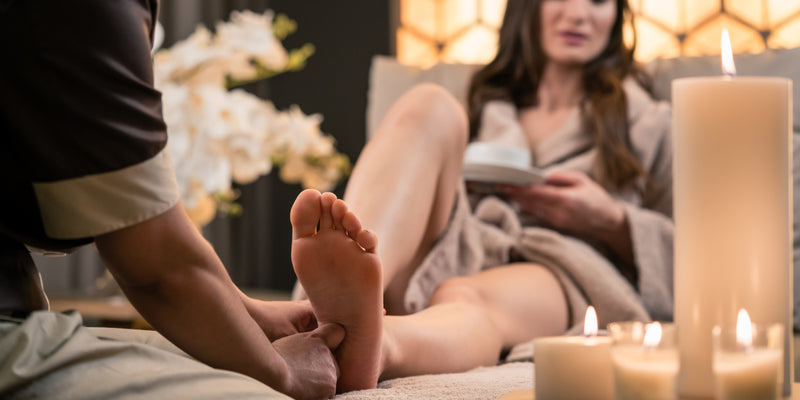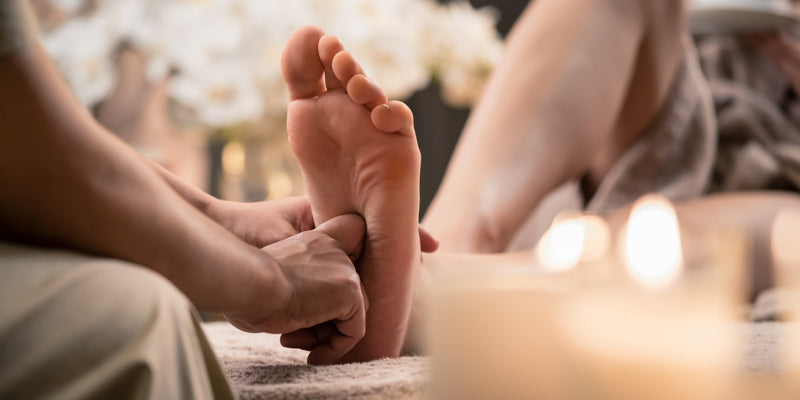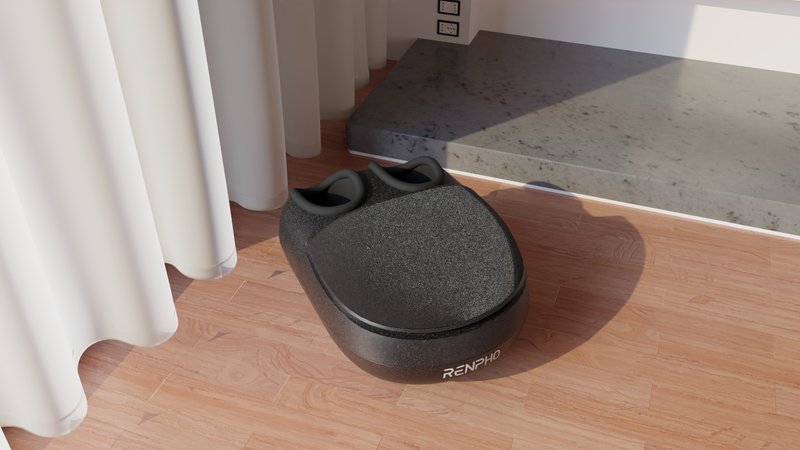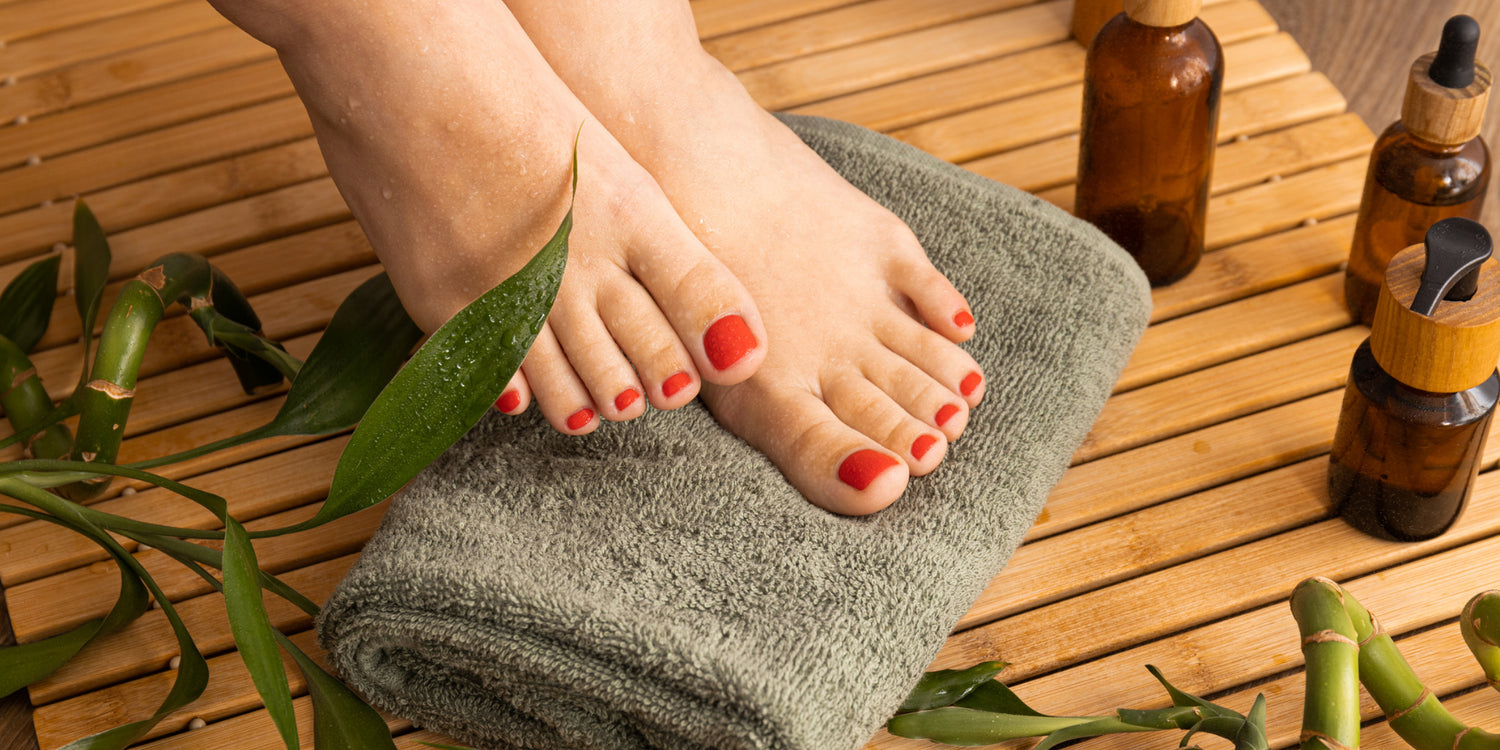Whether you're a seasoned walker or spend most of your days sitting, proper foot care is essential for maintaining healthy and happy feet. After all, our feet bear the weight of our entire body and take us wherever we need to go. Neglecting them can lead to discomfort, pain, and even more serious issues down the line.
But fret not as we'll explore the ABCs of foot hygiene and provide you with practical tips to keep your feet in tip-top shape. Let's embark on this journey together and discover the secrets to maintaining optimal foot hygiene.
Why Is Foot Hygiene Important?

Foot hygiene is a crucial aspect of personal care that is often overlooked. Our feet are constantly in contact with various surfaces, exposed to moisture, and encased in footwear for long periods. As a result, they can become breeding grounds for bacteria and fungi, leading to a variety of foot-related issues. Proper foot hygiene is essential for keeping our feet healthy and maintaining overall hygiene and preventing infections.
What Happens if You Neglect Proper Foot Care?
Neglecting proper foot care can lead to a variety of consequences and potential health complications. Failure to pay attention to foot care can result in pain, discomfort, and limited mobility. Moreover, it can lead to more serious issues.
One of the immediate consequences of neglecting foot care is the development of calluses, corns, and blisters. These can be painful and limit one's ability to walk comfortably. Ingrown toenails are another common consequence, which can cause pain, infection, and difficulty in walking if left untreated.
Long-term neglect of foot care can lead to more severe health problems. Untreated foot conditions can result in chronic foot pain, making it challenging to engage in physical activities and negatively impacting overall quality of life. Furthermore, foot problems can affect balance and increase the risk of falls, particularly among older adults.
Neglecting foot care can also contribute to the development of infections. Minor cuts, blisters, or ulcers that are not properly cleaned and cared for can become infected. If left untreated, these infections can spread, potentially leading to cellulitis, abscesses, or even sepsis.
Timely addressing of foot problems is essential. Seeking prompt medical attention and practicing good foot hygiene can help prevent potential complications associated with neglected foot care. Regularly inspecting the feet for changes, maintaining proper hygiene, wearing comfortable and well-fitting shoes, and seeking professional help for any foot issues are crucial in preventing serious complications.
What Are the ABCs of Foot Hygiene?

Foot hygiene is essential to maintain healthy feet and prevent various foot problems. By following the ABCs of foot hygiene, individuals can ensure that their feet remain clean, comfortable, and free from infections. These simple and practical steps can be easily incorporated into one's daily routine, helping to promote overall foot health and well-being. From washing and drying the feet thoroughly to choosing the right footwear, maintaining proper foot hygiene is crucial in preventing issues such as athlete's foot, fungal nail infections, and odors. By understanding and applying the ABCs of foot hygiene, individuals can take proactive steps in caring for their feet and enjoying optimal foot health.
A is for Appropriate Footwear
When it comes to taking care of our feet, nothing is more important than wearing appropriate footwear. Not only does it provide comfort and support, but it also plays a vital role in protecting our feet and preventing injuries.
Choosing the right shoes involves considering several factors. Firstly, the fit of the shoe is crucial. Ill-fitting shoes can cause blisters, calluses, and even deformities such as bunions or hammertoes. It is important to ensure that the shoe provides enough room for the toes to move freely and that it does not squeeze or rub against any part of the foot.
Another factor to consider is the arch support. Shoes should have adequate arch support to prevent foot strain and conditions like plantar fasciitis. The arch supports should match the natural shape of the foot, offering stability and reducing the risk of injury.
It is also important to replace shoes as they wear out. Over time, shoes lose their ability to provide proper cushioning and support, leading to discomfort and an increased risk of injuries. Regularly checking the condition of the shoes and replacing them when necessary is crucial for maintaining foot health.
B is for Blood Flow
Blood flow is the crucial process that transports oxygen and nutrients to various organs and tissues within the body. It begins with the heart, a powerful muscular organ that serves as the pump driving the circulation of blood.
The heart consists of four chambers: the right atrium, right ventricle, left atrium, and left ventricle. Blood enters the right atrium, and then flows into the right ventricle. From there, it is pumped into the lungs through the pulmonary artery, where oxygen is obtained, and carbon dioxide is eliminated.
Oxygenated blood returns to the heart through the pulmonary veins, entering the left atrium, and then proceeds to the left ventricle. It is propelled throughout the body via the aorta, the largest artery. Arteries are the blood vessels responsible for carrying blood away from the heart, delivering oxygen-rich blood to the organs and tissues. As the arteries branch out into smaller vessels called arterioles, they eventually lead to tiny capillaries.
Capillaries are the smallest blood vessels with thin walls, forming a vast network throughout the body. Their function is to exchange oxygen, nutrients, and waste products with the surrounding tissues. Oxygenated blood delivered by capillaries is then collected by small veins, which merge into larger veins. Veins carry deoxygenated blood back to the heart, completing the blood flow cycle.
The circulatory system plays a crucial role in delivering oxygen and nutrients to all parts of the body. As blood flows through the arteries, it brings essential nutrients and oxygen to organs and tissues, supplying them with the energy they need to function properly. Simultaneously, waste products such as carbon dioxide are picked up and transported away. This continuous circulation ensures the body's cells receive what they need while eliminating waste.
C is for Cleanliness
Maintaining cleanliness is a fundamental aspect of skincare routines, and incorporating vitamin C can further enhance its benefits. Vitamin C, also known as ascorbic acid, is a powerful antioxidant that aids in protecting the skin when applied topically.
One of the primary benefits of using vitamin C in skincare products is its ability to combat signs of aging. It promotes the production of collagen, a protein that helps keep the skin firm and elastic. With regular use, vitamin C can improve the appearance of fine lines, wrinkles, and uneven skin tone, leaving the skin looking youthful and radiant.
However, neglecting cleanliness in skincare can pose potential risks. Without proper cleansing, dirt, oil, and bacteria can accumulate on the skin's surface, leading to clogged pores and acne breakouts. Additionally, the absence of cleanliness hinders the absorption and effectiveness of skincare products, including vitamin C.
Incorporating cleanliness as a crucial step in a skincare routine is vital for optimal skin health and appearance. By cleansing the skin thoroughly, we ensure the removal of dirt, excess oil, and makeup residue, allowing the products we apply, such as vitamin C serums and moisturizers, to penetrate deeply and work effectively. A clean canvas optimizes the benefits of skincare products, leading to healthier, glowing skin.
D is for Daily Foot Checks
Daily foot checks are crucial for individuals with diabetes as they can help identify and address potential foot issues before they become serious. People with diabetes have a higher risk of developing foot complications due to reduced blood flow and nerve damage, making daily foot checks an essential part of their self-care routine.
When inspecting the feet thoroughly, it is important to examine different areas to ensure that no potential warning signs go unnoticed. To begin, start by looking at the tops of the feet, noting any abnormalities such as redness, swelling, or sores. Next, inspect the sides of the feet, paying attention to any signs of cuts or blisters that may have gone unnoticed. Move on to the soles of the feet, checking for any calluses or areas of increased pressure. Make sure to examine the heels for cracks or dry, flaky skin. Finally, don't forget to inspect the areas in between the toes, where infections can easily develop.
During the foot check, be on the lookout for any sores, which may be slow to heal or show signs of infection, such as redness, warmth, or pus. Redness in any area of the foot, especially with tenderness or increased warmth, may indicate inflammation or infection. Cuts or abrasions should be immediately cleaned and protected to prevent further complications. Blisters, although common, should not be punctured or popped, as this can lead to infection. Lastly, bruises, particularly in specific areas without any recollection of trauma, should be taken seriously and evaluated by a healthcare professional.
Takeaway
Proper foot care is essential for maintaining healthy and happy feet, regardless of whether you're a seasoned walker or spend most of your days sitting. Neglecting foot hygiene can lead to discomfort, pain, and potentially more serious issues down the line. That's why it's crucial to prioritize foot care and incorporate it into your daily routine.
By exploring the ABCs of foot hygiene and following the practical tips provided, you can ensure that your feet remain in tip-top shape. Remember, foot hygiene is not just about keeping your feet clean; it's about preventing infections, addressing potential issues promptly, and maintaining overall foot health.
Taking care of your feet is important because they bear the weight of your entire body and take you wherever you need to go. Neglecting them can lead to consequences such as calluses, corns, blisters, ingrown toenails, chronic foot pain, balance issues, and even infections. By practicing proper foot hygiene, regularly inspecting your feet, wearing appropriate footwear, paying attention to blood flow, and maintaining cleanliness, you can prevent these problems and enjoy healthier, happier feet.
So, let's prioritize our foot health and embark on this journey together. By understanding the importance of foot hygiene and implementing the ABCs of foot care, we can give our feet the attention and care they deserve, ensuring they support us for many years to come. Remember, healthy feet lead to a healthier and more active life.
Renpho Health Tips
-

Stress Buster: The Healing Touch of Reflexology
May 6, 2024
Read more >
-

Holistic Healing 101: Discover the Healing Benefits of Foot Reflexology
April 22, 2024
Read more >
-

Understanding Academic Stress in Students: Causes, Effects, and Solutions
April 1, 2024
Read more >
-

Relax and Recharge Your Body with the Amazing Benefits of Shiatsu Massagers
February 27, 2024
Read more >
-

Faster and Stronger: 5 Exercises to Improve Your Running
May 15, 2023
Read more >

